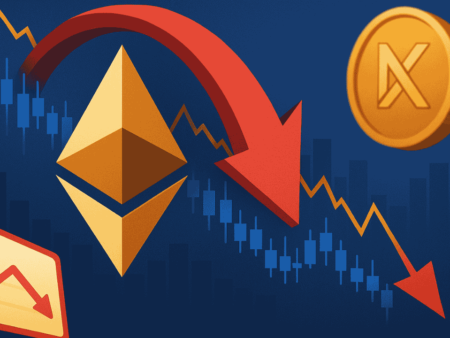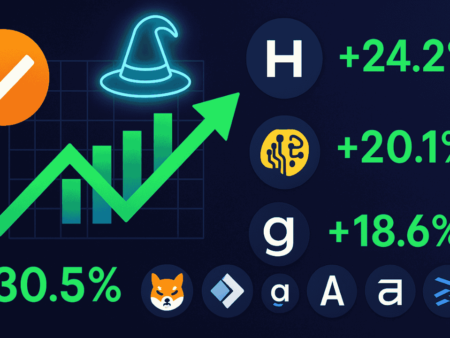The crypto wallet you choose in 2025 says more about your needs than your ideology. A few years ago the decision was simple: cold storage if you cared about security, a browser extension if you wanted speed. Today the best wallets blur those lines. They pair hardware-grade protection with one-tap mobile flows, hide gas headaches behind smart routing, and speak across chains without forcing you to juggle ten different apps. The result is a market where “best” doesn’t mean the same thing for every user, but a handful of principles now define what top-tier looks and feels like.
The wallet landscape has grown up
Two structural shifts set the tone this year. First, multi-chain is no longer a bullet point. Serious wallets route value across Ethereum rollups, Solana, Bitcoin, and Cosmos with the same ease you expect when moving money between checking and savings. Bridges and swaps are embedded, and the app quietly chooses the safest path instead of making you pick a network. Second, the industry finally treated onboarding like a product problem. Seed phrases still exist, but passkeys, social recovery, and smart accounts are letting newcomers start with an email or device login and upgrade to self-custody without friction.
What “best” means in 2025
Security remains non-negotiable, but the way wallets deliver it has changed. The top apps combine several layers: battle-tested cryptography, open-source code or third-party audits, hardware integrations, and increasingly, MPC or account-abstraction models that remove the single point of failure. On the usability side, the leaders cut through complexity. They show fiat equivalents by default, surface clear risk warnings before a signature, and decode smart-contract data into plain language so you know what you’re actually approving. True multi-chain support rounds out the picture. A modern wallet tracks your balances and NFTs across chains, classifies transactions by app, and lets you pay fees in a token you actually hold rather than stranding you because you’re out of gas on the target network.
Hardware wallets without the hard edges
Cold storage still sets the standard for safeguarding long-term holdings, and the best devices learned to play nicely with the rest of your stack. Bluetooth and USB-C are table stakes; secure elements isolate private keys; larger screens display the full destination and amount so you can verify what you sign. The key change is workflow. Where you once had to suffer through clunky bridges between a device and a browser extension, 2025’s premium setups pair hardware to a companion mobile app that handles swaps, staking, and NFT viewing while the device confirms the cryptographic actions. Long-term investors can lock assets away, and active traders can still benefit from cold-key approvals without losing speed.
Mobile and browser wallets finally agree on the basics
Mobile wallets used to be convenient and risky; browser extensions were powerful and unforgiving. The best of each category now meet in the middle. Mobile clients launched professional-grade features—limit orders, staking dashboards, and clear slippage controls—while extensions borrowed mobile’s guardrails with phishing detection, scam-site blocklists, and transaction simulation that flags approvals you’ll regret. Cloud backups are available, but they are opt-in and encrypted on the device before anything touches remote storage. When you connect to a dApp, the wallet shows a readable summary of what the contract can do with your tokens and for how long. That kind of context saves portfolios.
Smart accounts change wallet UX
Account abstraction moved from whitepapers to production. Smart accounts allow programmable rules at the account level: daily spending limits, time-locked transfers, and multi-factor prompts for high-value moves. You can delegate gas to an app or pay fees in a stablecoin you already hold. New users onboard with a passkey and add hardware or social recovery later without changing addresses. For teams, permissioned roles are a breakthrough. A treasurer can approve up to a threshold while large transfers automatically request a co-sign, all enforced by the account rather than a separate multisig contract. The effect is simple: wallets feel less like raw key managers and more like modern financial apps that happen to be non-custodial.
Cross-chain in practice, not marketing
A wallet can’t call itself multi-chain if it strands you during a bridge. Leading apps solve that invisibly. If you hold USDC on an Ethereum rollup and want to buy on Solana, the wallet assembles a route that combines a reputable bridge and a DEX swap, quotes the net amount including fees, and executes it as a single flow. Your activity log still shows each leg for auditability, but you don’t have to think in hops. Support for Bitcoin matured as well. Taproot-aware signing, PSBT workflows, and Ordinals or Runes display sit alongside EVM and Cosmos accounts rather than in a separate app. That coherence matters for traders who move between ecosystems daily.
Security features that actually help
Threats changed, so defenses did too. Real-time simulation warns if a signature will grant infinite spending approval or interact with a contract flagged for exploits. Domain and contract allowlists reduce the chance of a fat-fingered approval. Some wallets now use on-device machine learning to spot anomalous behavior, like an approval request immediately after you paste a clipboard address—a common social-engineering pattern. For high-net-worth users, MPC splits the key across secure enclaves on multiple devices, eliminating a single point of compromise while preserving self-custody. None of these protections matter if you can’t restore access, so recovery is treated with the seriousness it deserves. Social guardians, hardware recovery shares, and printed shards are supported with clear, human instructions rather than arcane flows.
Custodial, non-custodial, and the middle ground
There is a place for reputable custodians, especially for businesses and newcomers who need tax reporting, role-based access, and 24/7 support. But the most interesting motion in 2025 is the middle ground. Semi-custodial wallets use MPC so a service can co-sign small transactions or help with recovery without ever holding unilateral control. You can set policies that require the service to pause activity if a device is reported stolen or if a transaction exceeds your preset limits. That model brings bank-like safety nets to crypto without giving up ownership.
Picking the right stack by use case
The best hardware-plus-mobile combo still wins for cold storage and periodic rebalancing. Active DeFi users thrive with a smart-account wallet that offers readable simulations, gas abstraction, and tight hardware integration. NFT creators need media-forward galleries, royalty settings, and support for renting or lending primitives. Cross-chain traders benefit from a wallet that treats bridges and DEX aggregation as a first-class citizen, not an afterthought. Whatever your profile, insist on plain-English transaction prompts, recent audits, and an export path that lets you move to another wallet without hostage risks.
A note on transparency and trust
Open-source code, or at minimum verifiable builds and frequent audits, is no longer a nice-to-have. It’s the baseline for trust. The best teams publish incident reports when issues arise, run active bug-bounty programs, and maintain clear status pages that show RPC or bridge outages in real time. They also separate revenue from risky design. If a wallet makes money by nudging users into partner swaps or sponsored dApps, the conflicts are disclosed up front and can be disabled. That honesty is part of security too.
The bottom line
Crypto wallets in 2025 finally reflect how people actually use crypto. Security is stronger, onboarding is calmer, and moving across chains feels less like crossing a border and more like switching tabs. There is no single winner because there is no single user, but the pattern is clear. The best wallets give you ownership without anxiety, power without jargon, and a way to participate across ecosystems without wondering which token you need just to pay a fee. If your current setup can’t do that, it isn’t keeping up with the market.











